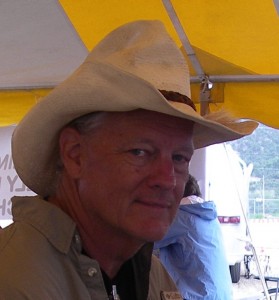2 – Fiberglass Technology
The history of fiberglass fly rods is well covered in the Victor Johnson’s book*. For this post I will focus on the technology of modern fly rods. When making your next purchase, it will help all of us to understand how a rod is made and the variables involved. Before starting down this path, I will briefly mention how it all started.
Two scientist/engineers, Dr. Havens and Dr. Howald came out of the WWII aircraft industry to develop fiberglass fly rod technology. Dr Howald developed a process of placing fiberglass fibers on a mandrel and took it to Shakespeare on the east coast. Dr. Havens started Narmco on the west coast. The Havens process wrapped fiberglass fabric around a mandrel to produce a hollow fiberglass tube. This became the industry standard process. Both companies were producing rods by 1945. People from Narmco, more than Shakespeare, soon started other companies, combining their process knowledge with the expertise of championship fly casters, and an industry was born.
How then did they build a fly rod? The process starts with a steel mandrel that is the inside diameter and taper of the of the rod. Fiberglass fabric impregnated with a binder, glue, is wrapped around the mandrel. This is wrapped with a heat shrink cellophane, and the result placed in an oven. The heat causes the binder to saturate the fabric, and the tape shrinks to compress and hold the saturated fabric in place. It is then taken from the oven to cool. The tape is removed, and the mandrel is pulled from inside leaving a tapered hollow fiberglass tube – our rod blank. Substitute graphite for fiberglass fabric and the process produces today’s graphite rod blank. In either case the blanks are sanded to remove the spiral marks left by the tape, or left un-sanded. The mandrel determines the rod taper and diameter. It can be used for three or four rods a day. Production requires many, and they must be exactly the same. These are provided by a small number of companies using a centerless grinding process. The specifications were developed by trial and error along with experienced guesses how to modify an existing mandrel to produce desired changes in rod performance. Are there algorithms today that go directly from rod characteristics to mandrel specifications? I don’t know. The first binder was phenolic, then polyester, and finally epoxy. Today the epoxy formula is one of the variables that manufacturers adjust to meet their needs. Another is the fabric material and weave. The first rods were made from square weave, an equal number of fibers in both directions, lengthwise and radial (wrapping around the rod). Radial fibers keep the rod from deforming when bent, but more fibers than necessary add weight. Fabric impregnated with a binder is called prepreg, and like mandrels is supplied by a few companies. Fabric evolved to having many more lengthwise fibers than radial. Lastly, there is the amount of material wrapped around the mandrel to produce the wall thickness.
So combine the taper, prepreg, and wall thickness with process times, temperatures, and pressures and you get the action and performance of the rod in your hand. The fiberglass people learned to understand these variables, and to manage process control in order to produce tens of thousands of identical fly rods at a reasonable cost.
In the next post I will cover the other components that go into a fine rod, and then move on to specific rods in the collection.
[print_link]
* Fiberglass Fly Rods, The Evolution Of The Modern Fly Rod From Bamboo To Graphite.
Victor R Johnson and Victor R. Johnson, Jr. , 1996 (This book is out of print and very expensive if you find a copy. However, Victor Johnson, Jr has written a 20th Anniversary Edition that provides new information. He can also provide a CD copy of the original for little cost. Contact him at www.engineeringpathways.com)

Leave a Reply